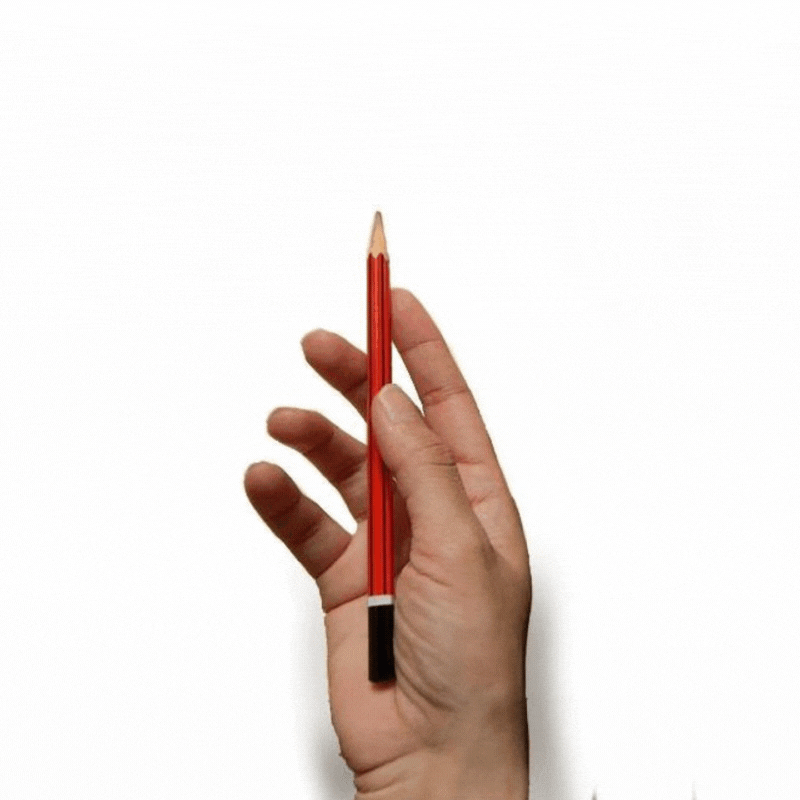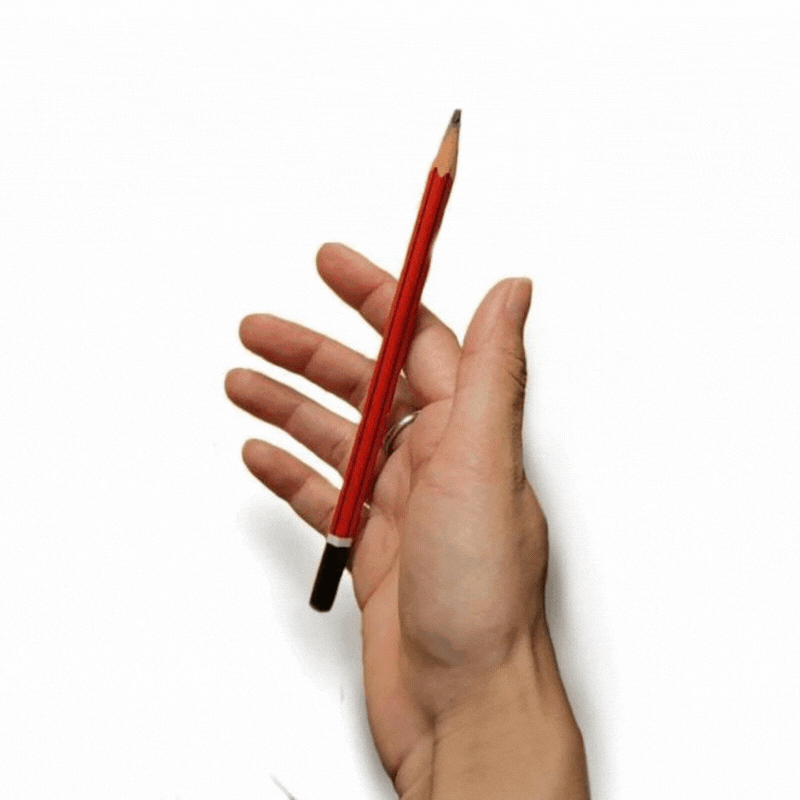How to Hold a pencil correctly is essential for anyone who loves to draw. You might think you've been doing it right since you were a kid, but drawing requires different techniques than writing. If you're struggling to make your drawings come to life it might be time to rethink your grip.
Contents
Correct way of holding a pencil to better your skills
Benefits of using Artist's Grip
Why Traditional Grip is not suitable for drawing?
You'll say Hey! I can still draw just the way I have been doing it. But here's the thing, when you are writing, the area covered by each alphabet is relatively tiny compared to your drawing. Hence you have to hold your tools accordingly.
For instance, look at the following images to understand the concept:

The marked area with grey is the amount of space one requires to write where wrist support would be of great help.

If using wrist support or the usual grip when drawing such bigger strokes (as marked around this apple) one needs to make adjustments as to holding a pencil or moving their hand in different directions and even resting their wrists at weird angles.
When we write, we use small, precise movements to form letters. But when we draw, we need to create much larger strokes and work with different angles.
What happens when you use Traditional Grip?
Your drawing ability remains limited
When starting a painting, drawing your subject is the first step that follows numerous other things. Using the traditional grip that we use to write makes it difficult to control the pencil and create the effects you want.
Your wrists may face consequences
When drawing with the support of your hand, the wrist is very much in use and it can lead to wrist strain and other health problems if you draw for long periods. Draw with your full body intact rather than bending and moulding it at a certain angle which leaves you drained.
Correct way of holding a pencil to better your skills
To avoid all these issues and keep your health in check, start holding your tools in any of the following ways.

1. Overhand Grip
This grip involves holding the pencil with your thumb and index finger over the pencil, and your other fingers resting on the pencil or hovering in the air. This grip allows for more fluid movements and larger strokes, making it a great choice for drawing. It also helps prevent
wrist strain and other issues.

There may be numerous types of overhand grips too, just use whatever you feel comfortable with.
2. Underhand Grip

The underhand grip involves holding the pencil with your palm facing up and your fingers underneath the pencil. This grip can provide more control over your pencil and can be useful for fine details and precise lines.
3. Tripod Grip

The tripod grip involves holding the pencil between your thumb, index, and middle fingers, with the pencil resting on your ring and pinky fingers. This grip can provide a balance between control + fluidity and can be a good choice for a variety of drawing techniques.
Benefits of using Artist's Grip
Increases flow in your drawing
Holding the pencil in the air makes you confident in your abilities as your hand can move around and break free from any dependent variable.
Easy to make bigger strokes
Once you are not using any support your hand will go on to make big strokes.
Prevents wrist-related issues in the long run
Since there's no role for wrist or hand bending, you won't be blaming or leaving art because of any injuries.
Easier to work on Big Projects
For bigger canvases, your eyes must remain on the whole canvas rather than one corner. To focus on the whole picture, your hand must work from a distance to help you visualise.
Helps in measuring
When working on still-life and portraits, one may be required to measure the proportions of the objects to bring your work to life. This grip will help you measure easily and put it directly on the canvas while our usual grip doesn't allow any of these benefits.
I hope this might be an exciting one for those who weren't aware. If you see any differences after trying it do let me know through the comments.
Happy Drawing!

Comments